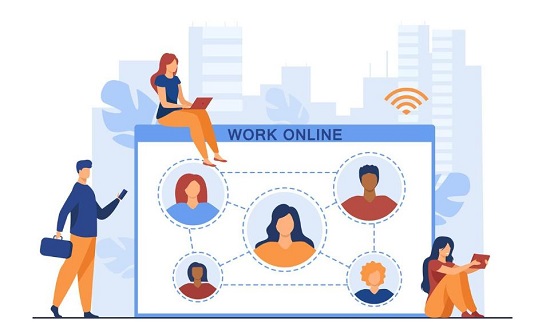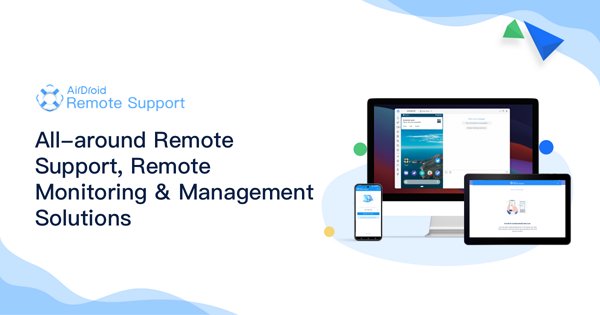What Is Hybrid Remote Work? The Future of Flexible Employment!
Many people learned what is hybrid remote work after the outbreak. Hybrid remote work solves the problems caused by the worldwide pandemic. When the pandemic hit, companies had to figure out how to keep their employees safe without sacrificing output.
Remote jobs quickly become popular and crucial to the survival of many businesses. However, abandoning the conventional office layout revealed drawbacks, such as diminished opportunities for impromptu communication and a sense of shared purpose among employees.
Here comes Hybrid Remote Work, an ideal combination of home and work hours. This flexible model considers the good things about both worlds.
Because of this, workers can have more flexibility in their schedules and less stress on the road. It sets aside some days for in-office collaboration, which may reignite cooperation, creativity, and the invaluable human ties crucial to a successful workplace. So, what does hybrid remote mean?
What Is Hybrid Remote Work?
This new working method incorporates typical office employment and working from home. Workers may choose where and when they do their jobs, often dividing their time between the workplace and other sites. This strategy seeks to balance the advantages of in-person teamwork and those of remote employment.
"Hybrid remote work" means employees can choose to work in the office or remotely from another location, depending on their work schedule. It promotes a healthier work-life balance by empowering people to shape the best workplaces for them.

The Different Hybrid Work Models
Hybrid work models provide workers the best of both worlds by letting them split their time between the workplace and other locations. These frameworks help businesses deal with the ever-evolving nature of work while raising morale and output. Some types of hybrid workplace models are:
Flexible Hybrid Work Model
Employees can select where, when, and how they carry out their professional obligations when working in a hybrid environment. It includes where they conduct their job and how they do it. The proportion of a person's waking hours spent at work vs. home will depend on factors such as preference and the specifics of their job.
This approach has the most latitude for customization, letting workers decide when and where they get their job done. It encourages independence and autonomy, allowing workers to balance work and personal life.
Fixed Hybrid Work Model
Employees in the fixed hybrid model have set-in-stone schedules, with some days dedicated to in-office work and others to work from home. They may, for instance, come into the office three days a week and work from home the other two.
This regular schedule strikes a good mix between the advantages of in-person teamwork and those of working from home. Teams may schedule in-person meetings and other forms of collaboration while respecting members' specific choices for distant participation.
Office-First Hybrid Work Model
The traditional office is still the primary place of business under the "office-first" hybrid model. Employees often spend their days in the workplace. However, they may sometimes work from home. The office remains the primary location for teamwork, meetings, and routine business activities.
This structure encourages workers to bond with one another and the company via natural conversation. Incorporating remote work as a choice allows for more adaptability and meets the needs of businesses with diverse workforce needs.
Remote-First Hybrid Work Model
The remote-first hybrid model is an alternative to the office-first approach that encourages workers to do most of their work away from the office. With digital communication and collaboration technologies, employees complete most of their work at home or other convenient remote locations.
Team meetings, strategy planning, and social contacts may all require infrequent trips to the workplace. This approach emphasizes personalization, so workers may structure their day as they see fit while still getting the face-to-face time and company involvement they need.

Hybrid Remote Work vs Traditional Office Work vs Work from Home
| Aspect | Hybrid Remote Work | Traditional Office Work | Work from Home |
| Work Location | Mix of office and remote setting | Office premises | Home or chosen remote location |
| Communication Channels | Blend of in-person and digital communication | In-person and office communication | Digital communication |
| Collaboration | Both in-person and virtual collaboration | Primarily in-person collaboration | Virtual collaboration |
| Flexibility | High flexibility in choosing work location and schedule | Limited flexibility, fixed office hours | High flexibility in work hours and location |
| Commute | Reduced commuting, saving time and costs | Daily commuting to the office | No commuting required |
| Team Building | Combination of virtual and occasional in-person team activities | In-person team-building activities | Virtual team-building activities |
Best Practices - How to Adopt Hybrid Remote Work
The effectiveness and productivity of a business shift to a remote/office hybrid model depend on thorough planning and preparation. Here are some of the most essential guidelines to follow when setting up a remote/in-office work schedule:
Establishing a Hybrid Remote Work Culture
Share your vision for the ideal combination of in-office and remote work hours, availability, and output with your team.
Allowing employees flexibility in when and where they clock in may help them maintain a healthy work-life balance.
You may promote an atmosphere of open dialogue by using the internet to maintain contact with others and distribute information regardless of your physical location.
Providing Spatial Networks and Related Technologies
Ensure your workers can easily collaborate online by providing high-quality internet connections at their homes and offices.

Help people learn how to use digital tools and technology to boost efficiency and communication by providing them with training and help.
Protect critical information and guarantee secure remote access to corporate systems by enforcing appropriate security measures.
Determining Location and Time
Depending on the assignment, you may perform some or all outside the office.
Work with your staff to determine how they would like to spend their workdays, and then create a schedule that respects their preferences.
Set regular working hours during which everyone is accessible for real-time communication and cooperation.
Building Trust
Make reaching goals more important than keeping track of time spent on a project to encourage a mindset shift away from inputs and toward outputs.
Building a trustworthy workplace requires constant, open communication between employees, managers, and the firm.
Everyone in the workplace will better understand their own and the company's worth if rewarded for their efforts and successes.

Perfect Processes and Policies
Clearly define expectations for remote workers, establish a system for communicating and evaluating their output, and then stick to these principles.
Create a well-organized feedback system to track the hybrid model's performance and make modifications as needed.
Instead of focusing on the hours an employee puts in, evaluate them on the results they achieve.
Benefits and Challenges of Hybrid Remote Work
Combining in-office and remote work components creates a hybrid remote work style with benefits and drawbacks. By having this knowledge, businesses will be better able to make choices and adapt to the changing nature of the workplace.
Benefits
Flexibility in Work Environment
Employees have greater leeway to choose the atmosphere in which they conduct their jobs, boosting their comfort and output.
Increased Productivity
During peak performance, employees can put in additional hours, which improves both productivity and efficiency.
Better Time Management
It is suitable for one's health and happiness to balance one's personal and professional responsibilities.
Environmental Impact
If people commute shorter distances, they would spend less time in their cars, which would cause less carbon dioxide emission into the atmosphere.
Cost Savings
Because employees commute less and companies need less space and fewer pieces of equipment, there may be financial benefits for both parties.

Challenges
Technological Dependencies
Employees less familiar or comfortable with technology may need help to adjust to a workplace that heavily depends on technology for communication and productivity.
Communication and Collaboration
Finding a balance that satisfies working from home and being physically present at one's place of employment may be challenging and limit one's ability to communicate effectively.
Equitable Treatment
It may be challenging to ensure that remote workers and employees who are physically present in the office are treated equally in terms of opportunities, promotions, and the allocation of tasks.
Maintaining Company Culture
When employees work remotely, maintaining organizational culture can be challenging.
Isolation and Well-being
Because it may lead to feelings of loneliness and make it difficult to maintain boundaries between work and personal life, working from home may harm your mental health.

A Guide to Managing Hybrid Remote Work Teams
It takes careful planning to keep productivity, cooperation, and employee happiness high in hybrid remote work teams. To help you make the most of your time in a hybrid setting, we've laid down some guidelines:
Developing a Hybrid Work Schedule
Create a timetable that accommodates everyone on the team, considering their preferences and the business needs. Make sure everyone on the team is available at the same hours so that you can work together effectively.

Setting Work Goals and Plans
Set measurable, realistic objectives for each employee to help direct their efforts and fairly evaluate their success. Plan regular one-on-one and group meetings to review your progress, address any obstacles, and make necessary course corrections.
Implementing Meeting Strategies
Ensure meetings have an agenda and stay on topic by keeping them short and to the point. Plan periodic in-person get-togethers to strengthen team bonds, but do most updates and conversations electronically.
Controlling Task Load
Managing your staff's workload reasonably and dividing up jobs accordingly to avoid burnout is essential. To boost productivity and time management, instruct workers to choose priorities based on urgency and significance.
Establishing Healthy Boundaries
Stress the value of keeping regular work hours and limiting work interruptions in one's home life. Promoting a healthy work pattern is essential, encouraging your staff to avoid the temptation to put in extra hours.
Communicating Effectively
Use a variety of methods of communication to keep the lines of communication open and consistent among team members. It will encourage openness and cooperation. Foster an atmosphere of open communication by encouraging team members to voice their opinions, concerns, and suggestions.

Carrying Out Remote Team Activities
Host virtual team-building exercises and events to improve morale, productivity, and collaboration. Celebrate milestones, anniversaries, and birthdays online to foster community and camaraderie.
Choosing the Right Technology
Conduct a technology needs analysis for your team, paying particular attention to communication, collaboration, and project management solutions. Pick tools that are adaptable and easy to use for your team so that everyone can get right in with little to no learning curve.
How to Support Hybrid Remote Work Teams?
Adequate remote support is crucial to the smooth functioning of hybrid remote teams in today's ever-changing business environment. AirDroid Remote Support is a helpful software that streamlines and improves delivering remote help to remote employees by focusing specifically on mobile devices.
With the help of AirDroid Remote Support, IT departments may provide remote assistance for workers' smartphones and tablets. It is a vital component of today's hybrid remote work settings because it can support mobile-centric work environments.

How AirDroid Remote Support Assists Hybrid Remote Work Teams?
- Real-time Screen Sharing: By seeing the devices' displays in real-time, support staff can better direct hybrid remote worker and solve issues visually.
- File Transfer and Management: The ability to safely share files across mobile devices and support teams helps employees work together more efficiently.
- Chat and Communication: AirDroid Remote Support allows instantaneous two-way communication, resulting in more efficient resolutions and precise instructions.
- AR Camera, Screen Markup & Tutorial Gesture: During hybrid remote work, technicians can readily resolve IT difficulties faced by employees. For example, look through the employee's device camera and guide them by placing 3D markers on real-world objects. Take a screenshot of a remote device during a screen-sharing session and highlight the part you want to explain. Slide or tap the shared screen and the tutorial gesture will appear on the other person's device.
- Member Management & Permission Settings: According to the management needs of the enterprise, different members can be invited to manage devices, and the invited members can be managed. You can invite team members to participate in device management, and set their roles and permissions to make device management well organized.
- Device Group Management: Different groups can be created, and operations such as editing groups, deleting groups, and moving groups can be implemented to help enterprises better manage devices.
So, stop questioning, what is hybrid remote work? AirDroid Remote Support is an excellent resource that helps hybrid remote work teams, especially with mobile device management. Its characteristics, which center on mobile enablement, make it a crucial tool for any business adopting a hybrid work paradigm.
Wrap Up
Hybrid remote work is of critical importance in the modern workplace. The best working environments balance the independence of remote work and the need for face-to-face communication. Hybrid remote work is essential in today's dynamic professional environment since it protects workers' health and safety and boosts productivity and flexibility.






Leave a Reply.